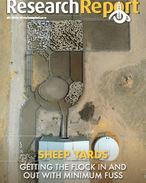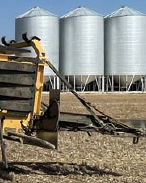This article is 7 years old. Images might not display.
The new mid-month outlooks, issued around the second Thursday of the month, provide a first look at whether it's likely to be wetter or drier and warmer or cooler than average across the country for the months and season ahead.
An outlook will continue to be released at the end of each month, updating the mid-month release and providing the most detailed advice on likely temperatures and rainfall.
Manager Climate Prediction Felicity Gamble said introducing more frequent updates to the Bureau's climate outlooks is an important service improvement.
“What drives our climate can sometimes change significantly within the space of a month - we saw that in October 2015, when our climate shifted into a very dry phase mid-month," Ms Gamble said.
"The new outlook uses this early intelligence from the models, and provides a first look at what the coming months and season are likely to bring.
“Having two outlook releases every month will help those who want to use the early climate information to plan further ahead, and will also be useful for those who prefer our end of the month information for decision-making.
“Like the daily weather forecast, where the forecast we issue for tomorrow will have the greatest reliability, our end-of-month outlooks will continue to provide the clearest picture of likely temperature and rainfall for the month and season ahead."
The first mid-month release was last week, on 17th August, giving those making climate-sensitive decisions an early look at likely conditions ahead. The overview is:
- The spring (September to November) outlook suggests rainfall is likely to be below average for western parts of Australia
- September is likely to be drier in southwest Australia, but wetter in parts of southern Queensland
- Daytime temperatures are likely to be warmer than average for most of Australia. Chances are highest (greater than 80%) in the north and southeast
- Spring nights are likely to be warmer than average over northern and eastern Australia
Both of Australia's major climate drivers at this time of year, the El Niño–Southern Oscillation (ENSO) and the Indian Ocean Dipole (IOD), remain neutral. More localised influences, such as sea surface temperatures around the Australian coastline, are likely to be affecting this outlook.
To view the latest outlook, including a video click HERE.






















